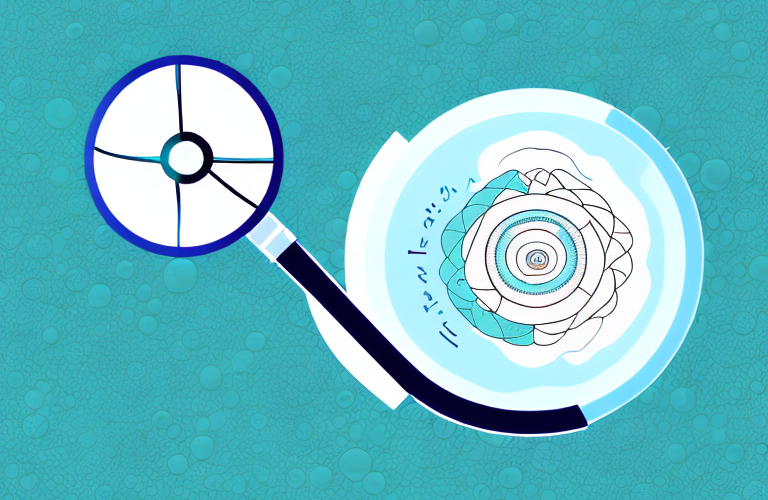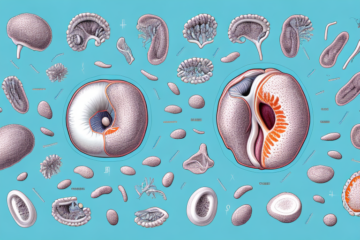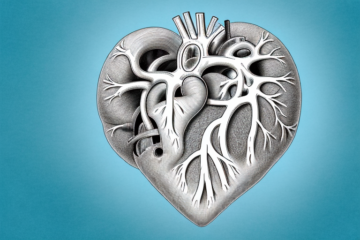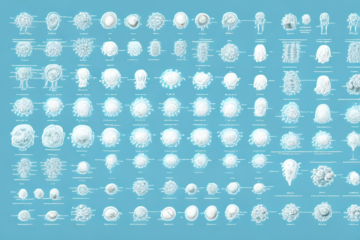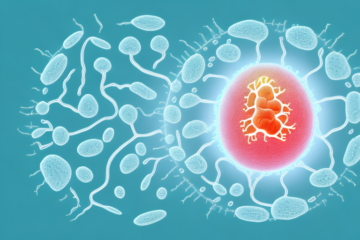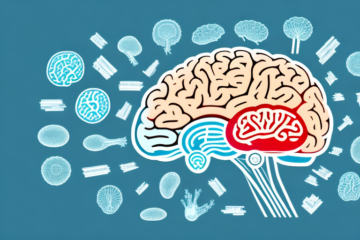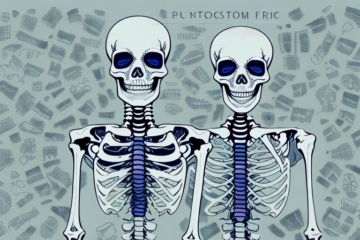Vaginal Intraepithelial Neoplasia (VAIN) is a condition that affects the lining of the vagina. In this article, we will discuss the symptoms, causes, diagnosis, treatment, and prevention of VAIN. We will also look at how to live with the condition and the outlook for patients with VAIN.
Understanding Vaginal Intraepithelial Neoplasia (VAIN) – What You Need to Know
Vaginal Intraepithelial Neoplasia (VAIN) is a condition that occurs when abnormal cells develop in the lining of the vagina. These abnormal cells can grow and cause changes in the cells of the vagina. VAIN is usually not cancerous but can lead to cancer if left untreated for a long period of time. VAIN is divided into different stages based on the extent of the changes in the cells of the vagina.
The exact cause of VAIN is not known, but it is believed to be linked to the human papillomavirus (HPV), which is a sexually transmitted infection. Women who have a weakened immune system, such as those with HIV, are also at a higher risk of developing VAIN.
The symptoms of VAIN can include abnormal vaginal bleeding, discharge, and pain during sex. However, some women may not experience any symptoms at all. It is important for women to have regular gynecological exams to detect any changes in the cells of the vagina and to receive appropriate treatment if necessary. Treatment options for VAIN may include surgery, laser therapy, or topical medications.
Types of Vaginal Intraepithelial Neoplasia (VAIN)
VAIN is categorized into three types based on the extent of the changes in the cells of the vagina:
- VAIN 1: Mild changes in the cells of the vagina
- VAIN 2: Moderate changes in the cells of the vagina
- VAIN 3: Severe changes in the cells of the vagina
It is important to note that VAIN is a precancerous condition, meaning that if left untreated, it can progress to vaginal cancer. Risk factors for developing VAIN include a weakened immune system, a history of cervical or vulvar dysplasia, and infection with human papillomavirus (HPV). Regular gynecological exams and Pap tests can help detect VAIN early and prevent it from progressing to cancer.
Causes of Vaginal Intraepithelial Neoplasia (VAIN)
The exact cause of VAIN is not known. However, it has been linked to a number of risk factors, including:
- Having unprotected sex
- Smoking
- Having a weakened immune system
- Having a history of cervical intraepithelial neoplasia (CIN)
- Being exposed to the human papillomavirus (HPV)
Recent studies have also suggested that hormonal changes may play a role in the development of VAIN. Women who have undergone menopause or who have had hormonal therapy may be at a higher risk for developing VAIN. Additionally, certain medications, such as immunosuppressants, may increase the risk of developing VAIN.
Symptoms of Vaginal Intraepithelial Neoplasia (VAIN)
Most women with VAIN do not experience any symptoms. However, some may experience:
- Abnormal vaginal bleeding
- Abnormal vaginal discharge
- Pain during sex
- Pain during urination
In addition to the above symptoms, some women with VAIN may also experience itching or burning in the vaginal area. It is important to note that these symptoms can also be caused by other conditions, so it is important to see a healthcare provider for an accurate diagnosis.
Risk Factors for Vaginal Intraepithelial Neoplasia (VAIN)
There are several risk factors that increase the likelihood of developing VAIN:
- Smoking
- Having unprotected sex
- Having a history of cervical intraepithelial neoplasia (CIN)
- Being exposed to the human papillomavirus (HPV)
- Having a weakened immune system
It is important to note that VAIN can also occur in women who have never had any of these risk factors. Regular gynecological exams and Pap tests can help detect VAIN early, when it is most treatable. If you are experiencing any abnormal vaginal bleeding or discharge, or have concerns about your risk for VAIN, talk to your healthcare provider.
Diagnosis of Vaginal Intraepithelial Neoplasia (VAIN) – What to Expect
VAIN is usually diagnosed through a biopsy of the cells of the vagina. A sample of the cells is taken and examined under a microscope to determine if there are any abnormal or cancerous cells present. A colposcopy may also be performed, which involves the use of a microscope to examine the cells of the vagina and cervix more closely.
In addition to a biopsy and colposcopy, your healthcare provider may also recommend an HPV test. This test checks for the presence of the human papillomavirus, which is a common cause of VAIN. If the test is positive, your healthcare provider may recommend further testing or treatment.
Stages of Vaginal Intraepithelial Neoplasia (VAIN)
VAIN is classified into three stages:
- VAIN 1: Mild changes in the cells of the vagina
- VAIN 2: Moderate changes in the cells of the vagina
- VAIN 3: Severe changes in the cells of the vagina
It is important to note that VAIN is a precancerous condition, meaning that if left untreated, it can progress to vaginal cancer. Regular gynecological exams and Pap tests can help detect VAIN in its early stages, when it is most treatable. Treatment options for VAIN include surgery, laser therapy, and topical medications.
Treatment Options for Vaginal Intraepithelial Neoplasia (VAIN)
The treatment for VAIN depends on the stage of the condition and the extent of the changes in the cells of the vagina. Treatment options include:
- Surgical excision or removal of the abnormal cells
- Laser therapy
- Cryotherapy (freezing) of the abnormal cells
- Chemotherapy or radiation therapy in severe cases where cancer has developed
It is important to note that VAIN can recur after treatment, so regular follow-up appointments with a healthcare provider are necessary to monitor for any changes. Additionally, some women may experience discomfort or pain during and after treatment, which can be managed with pain medication and other supportive measures.
Preventative measures, such as practicing safe sex and getting regular Pap tests, can also help reduce the risk of developing VAIN. Women who have a history of human papillomavirus (HPV) infection or other risk factors for VAIN should discuss screening and prevention options with their healthcare provider.
Surgical Treatments for Vaginal Intraepithelial Neoplasia (VAIN) – Pros and Cons
Surgical excision or removal of the abnormal cells is the most common treatment for VAIN. The pros of this treatment include:
- This treatment is highly effective in removing the abnormal cells
- It is a simple procedure that can be performed on an outpatient basis
The cons of surgical treatment include:
- There is a risk of bleeding, infection, and scarring
- It may not be effective in all cases
- There is a risk of recurrence of the abnormal cells
It is important to note that surgical treatment for VAIN may also have an impact on sexual function and satisfaction. Some women may experience pain or discomfort during sexual activity following surgery. Additionally, the removal of tissue may result in a change in the appearance or sensation of the vagina. It is important to discuss these potential side effects with your healthcare provider before undergoing surgical treatment for VAIN.
Non-Surgical Treatments for Vaginal Intraepithelial Neoplasia (VAIN) – Are They Effective?
Non-surgical treatments for VAIN, such as laser therapy and cryotherapy, are less invasive than surgical treatments and may be effective in some cases. However, these treatments may not be as effective as surgical treatments in removing all of the abnormal cells. Non-surgical treatments may also have side effects, such as pain and discomfort during and after the procedure.
It is important to note that non-surgical treatments may be a better option for some patients who are not good candidates for surgery due to underlying health conditions or other factors. Additionally, non-surgical treatments may be used in combination with surgical treatments to improve outcomes and reduce the risk of recurrence.
It is also important for patients to discuss the potential risks and benefits of non-surgical treatments with their healthcare provider, as well as any concerns or questions they may have. Patients should also be aware of the importance of follow-up appointments and monitoring to ensure the effectiveness of the treatment and to detect any potential recurrence of abnormal cells.
Living with Vaginal Intraepithelial Neoplasia (VAIN) – Coping Strategies and Support
Living with VAIN can be challenging, especially if you are dealing with severe symptoms or have undergone treatment for the condition. Coping strategies and support can help you manage the physical and emotional challenges of VAIN. Support groups and counseling can also be helpful in managing the stress and anxiety that can come with a diagnosis of VAIN.
It is important to remember that VAIN is a treatable condition, and with proper medical care, many women are able to recover fully. However, it is also important to take steps to reduce your risk of developing VAIN in the future. This may include practicing safe sex, quitting smoking, and maintaining a healthy diet and exercise routine.
Additionally, it is important to stay informed about the latest research and treatment options for VAIN. Your healthcare provider can provide you with information about clinical trials and other resources that may be available to you. By staying informed and taking an active role in your healthcare, you can better manage the challenges of living with VAIN and improve your overall quality of life.
Prevention of Vaginal Intraepithelial Neoplasia (VAIN) – What You Can Do
Preventing VAIN is possible by taking certain steps:
- Practice safe sex
- Get vaccinated against HPV
- Quit smoking
- Maintain a healthy lifestyle to boost your immune system
- Attend regular gynecological exams and screenings to detect any changes early
In addition to the above steps, there are other measures you can take to reduce your risk of developing VAIN. One of the most important things you can do is to maintain good vaginal hygiene. This includes washing the area regularly with mild soap and water, and avoiding the use of harsh chemicals or douches that can disrupt the natural balance of bacteria in the vagina.
Another important factor in preventing VAIN is to be aware of your family history. If you have a family member who has had cervical or vaginal cancer, you may be at a higher risk for developing VAIN. In this case, it is important to discuss your risk factors with your healthcare provider and to undergo regular screenings to detect any changes early.
Outlook for Patients with Vaginal Intraepithelial Neoplasia (VAIN)
The outlook for patients with VAIN depends on the stage of the condition, the extent of the changes in the cells of the vagina, and the effectiveness of the treatment. With early detection and prompt treatment, most women with VAIN have a good prognosis and can continue to lead healthy, normal lives after treatment.
However, if VAIN is left untreated or if it progresses to a more advanced stage, it can increase the risk of developing invasive vaginal cancer. Therefore, it is important for women to attend regular gynecological check-ups and to report any unusual symptoms or changes in their vaginal health to their healthcare provider.
In addition to medical treatment, lifestyle changes such as quitting smoking, maintaining a healthy weight, and practicing safe sex can also help to reduce the risk of developing VAIN and other types of vaginal cancer.

